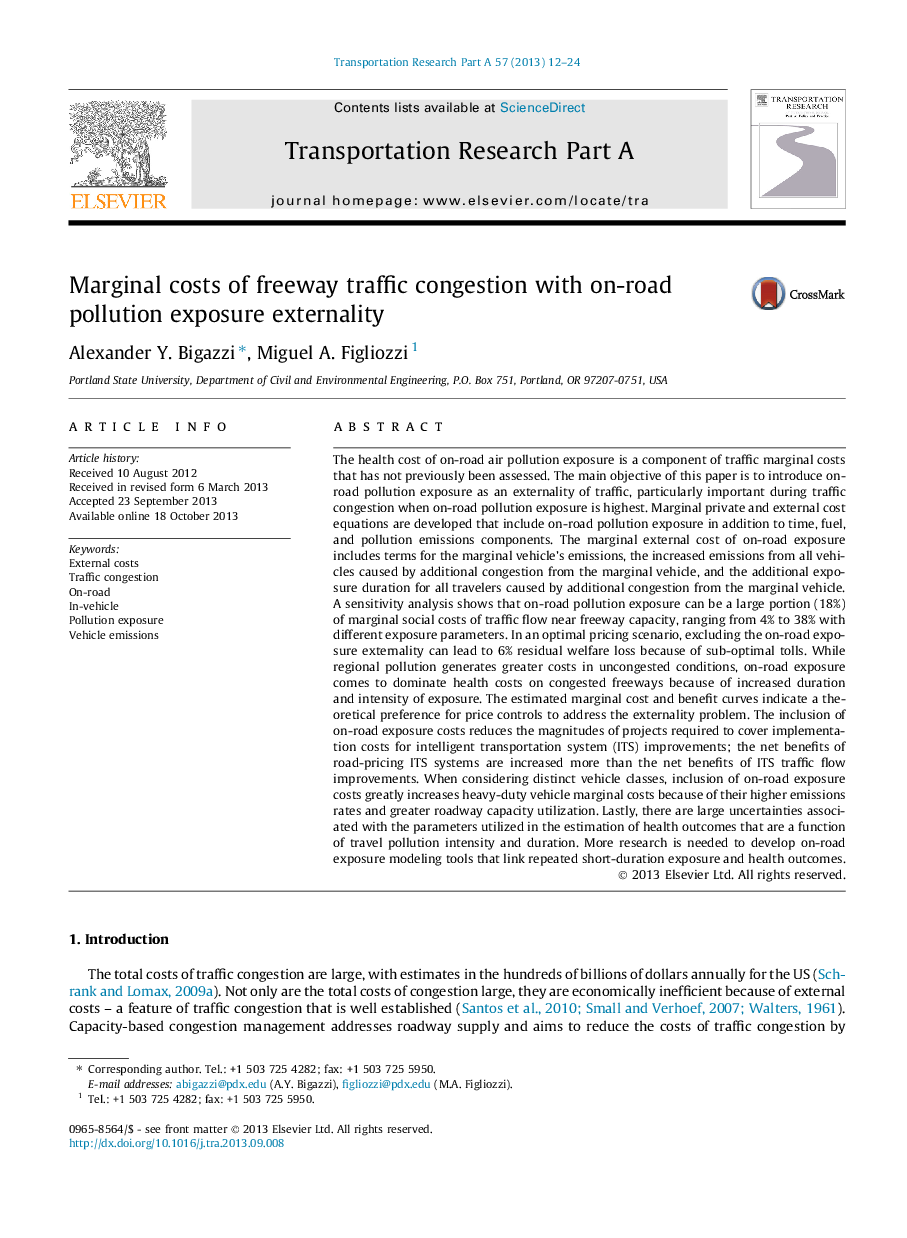| کد مقاله | کد نشریه | سال انتشار | مقاله انگلیسی | نسخه تمام متن |
|---|---|---|---|---|
| 310776 | 533365 | 2013 | 13 صفحه PDF | دانلود رایگان |

• On-road pollution exposure is introduced as an external cost of traffic congestion.
• On-road exposure can be a large portion of marginal costs on congested freeways.
• Including on-road exposure increases net benefits from congestion management.
• Marginal on-road exposure costs are much higher for heavy-duty vehicles.
• Importance of sensitivity analysis for travel demand and health cost uncertainties.
The health cost of on-road air pollution exposure is a component of traffic marginal costs that has not previously been assessed. The main objective of this paper is to introduce on-road pollution exposure as an externality of traffic, particularly important during traffic congestion when on-road pollution exposure is highest. Marginal private and external cost equations are developed that include on-road pollution exposure in addition to time, fuel, and pollution emissions components. The marginal external cost of on-road exposure includes terms for the marginal vehicle’s emissions, the increased emissions from all vehicles caused by additional congestion from the marginal vehicle, and the additional exposure duration for all travelers caused by additional congestion from the marginal vehicle. A sensitivity analysis shows that on-road pollution exposure can be a large portion (18%) of marginal social costs of traffic flow near freeway capacity, ranging from 4% to 38% with different exposure parameters. In an optimal pricing scenario, excluding the on-road exposure externality can lead to 6% residual welfare loss because of sub-optimal tolls. While regional pollution generates greater costs in uncongested conditions, on-road exposure comes to dominate health costs on congested freeways because of increased duration and intensity of exposure. The estimated marginal cost and benefit curves indicate a theoretical preference for price controls to address the externality problem. The inclusion of on-road exposure costs reduces the magnitudes of projects required to cover implementation costs for intelligent transportation system (ITS) improvements; the net benefits of road-pricing ITS systems are increased more than the net benefits of ITS traffic flow improvements. When considering distinct vehicle classes, inclusion of on-road exposure costs greatly increases heavy-duty vehicle marginal costs because of their higher emissions rates and greater roadway capacity utilization. Lastly, there are large uncertainties associated with the parameters utilized in the estimation of health outcomes that are a function of travel pollution intensity and duration. More research is needed to develop on-road exposure modeling tools that link repeated short-duration exposure and health outcomes.
Journal: Transportation Research Part A: Policy and Practice - Volume 57, November 2013, Pages 12–24